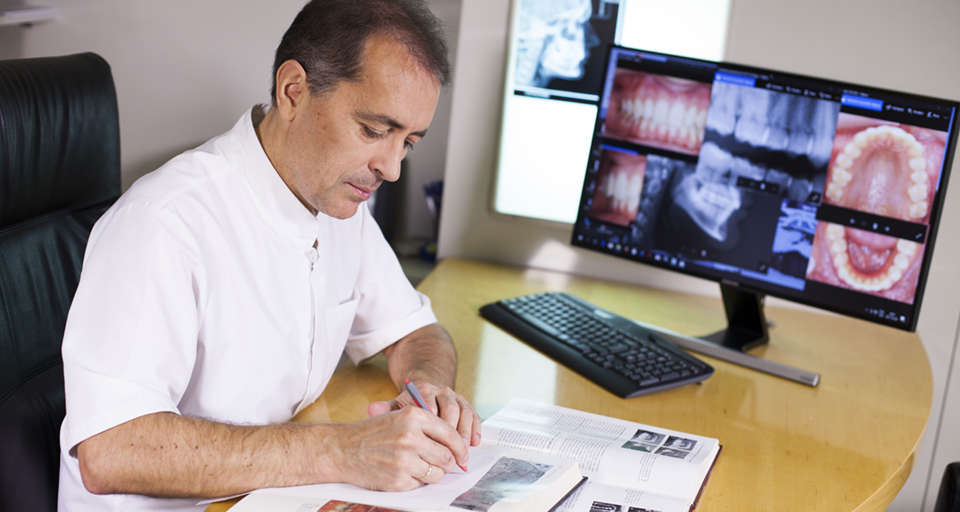Validation of a novel semi-automated method for three-dimensional surface rendering of condyles using cone beam computed tomography data.
Written by admin on August 30, 2013
Int J Oral Maxillofac Surg. 2013 Aug;42(8):1023-9. doi: 10.1016/j.ijom.2013.01.016. Epub 2013 Mar 23.
Xi T(1), van Loon B, Fudalej P, Bergé S, Swennen G, Maal T.
Author information:
(1) Department of Oral and Maxillofacial Surgery, Radboud University Nijmegen
Medical Centre, Nijmegen, The Netherlands.
Morphological changes of the condyles are often observed following orthognathic
surgery. In addition to clinical assessment, radiographic evaluation of the
condyles is required to distinguish the physiological condylar remodelling from
pathological condylar resorption. The low contrast resolution and distortion of
greyscale values in cone beam computed tomography (CBCT) scans have impeded an
accurate three-dimensional (3D) rendering of the condyles. The current study
proposes a novel semi-automated method for 3D rendering of condyles using CBCT
datasets, and provides a clinical validation of this method. Ten patients were
scanned using a standard CBCT scanning protocol. After defining the volume of
interest, a greyscale cut-off value was selected to allow an automatic
reconstruction of the condylar outline. The condylar contour was further
enhanced manually by two independent observers to correct for the under- and
over-contoured voxels. Volumetric measurements and surface distance maps of the
condyles were computed. The mean within-observer and between-observer
differences in condylar volume were 8.62 mm(3) and 6.13 mm(3), respectively. The
mean discrepancy between intra- and inter-observer distance maps of the condylar
surface was 0.22 mm and 0.13 mm, respectively. This novel method provides a
reproducible tool for the 3D rendering of condyles, allowing longitudinal
follow-up and quantitative analysis of condylar changes following orthognathic
surgery.
Copyright © 2013 International Association of Oral and Maxillofacial Surgeons.
Published by Elsevier Ltd. All rights reserved.
DOI: 10.1016/j.ijom.2013.01.016
PMID: 23528746 [Indexed for MEDLINE]




